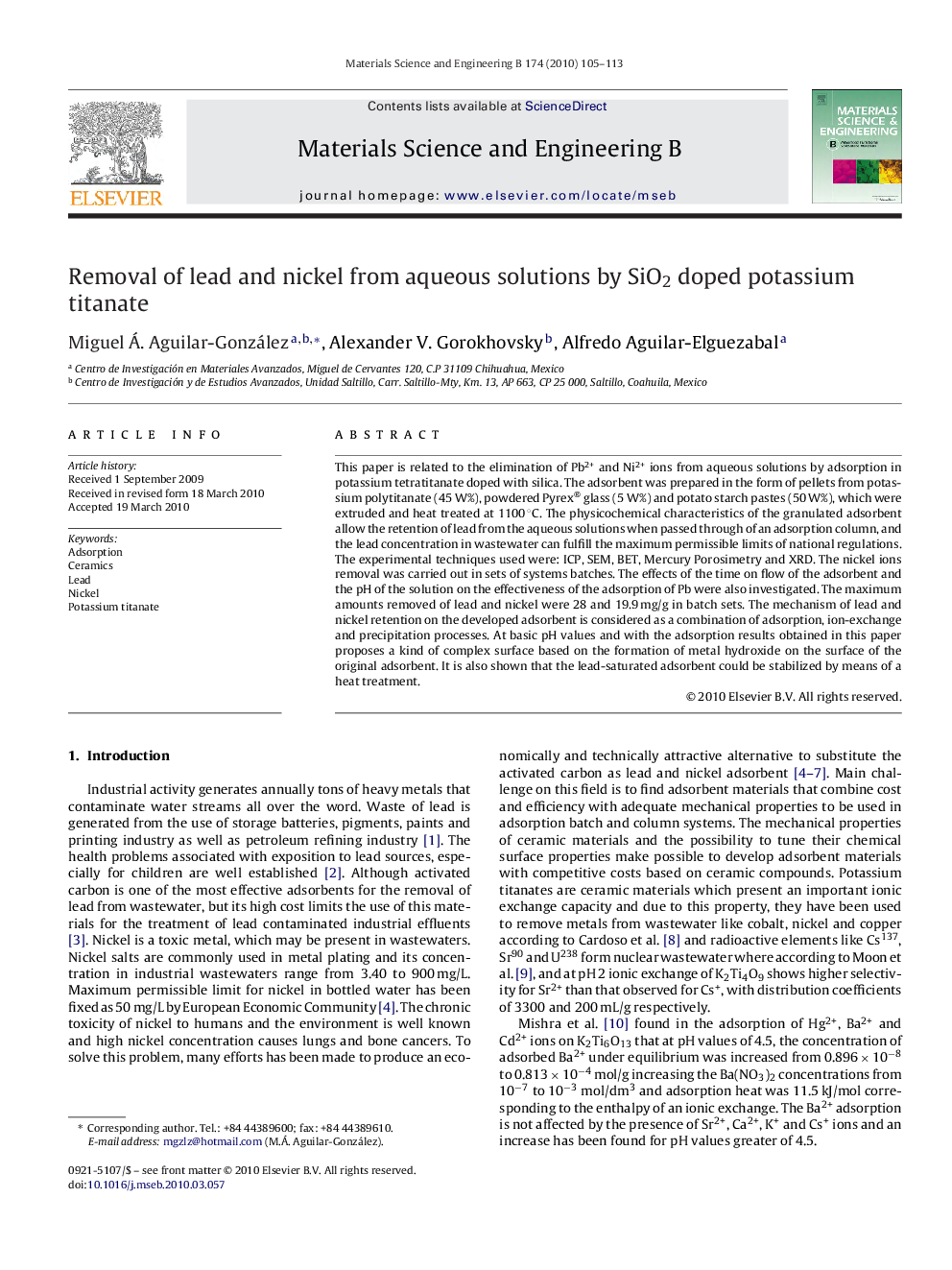| Article ID | Journal | Published Year | Pages | File Type |
|---|---|---|---|---|
| 1530036 | Materials Science and Engineering: B | 2010 | 9 Pages |
This paper is related to the elimination of Pb2+ and Ni2+ ions from aqueous solutions by adsorption in potassium tetratitanate doped with silica. The adsorbent was prepared in the form of pellets from potassium polytitanate (45 W%), powdered Pyrex® glass (5 W%) and potato starch pastes (50 W%), which were extruded and heat treated at 1100 °C. The physicochemical characteristics of the granulated adsorbent allow the retention of lead from the aqueous solutions when passed through of an adsorption column, and the lead concentration in wastewater can fulfill the maximum permissible limits of national regulations. The experimental techniques used were: ICP, SEM, BET, Mercury Porosimetry and XRD. The nickel ions removal was carried out in sets of systems batches. The effects of the time on flow of the adsorbent and the pH of the solution on the effectiveness of the adsorption of Pb were also investigated. The maximum amounts removed of lead and nickel were 28 and 19.9 mg/g in batch sets. The mechanism of lead and nickel retention on the developed adsorbent is considered as a combination of adsorption, ion-exchange and precipitation processes. At basic pH values and with the adsorption results obtained in this paper proposes a kind of complex surface based on the formation of metal hydroxide on the surface of the original adsorbent. It is also shown that the lead-saturated adsorbent could be stabilized by means of a heat treatment.
